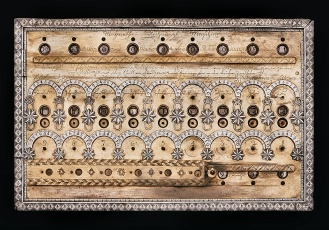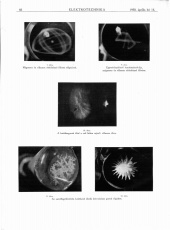User:Dusan Barok/Monoskop library, 2012: Difference between revisions
(Created page with " Dusan Barok, Graduation Project, Trimester 6, 2012. = Monoskop library = Monoskop library is a public resource for the new histories of media culture. Throughout the years I...") |
No edit summary |
||
| (7 intermediate revisions by 2 users not shown) | |||
| Line 1: | Line 1: | ||
Dusan Barok, Graduation Project, Trimester 6, 2012. | Dusan Barok, Graduation Project, Trimester 6, 2012. | ||
= Monoskop | = Monoskop Library = | ||
Monoskop | Monoskop Library is a public resource for the new histories of media culture. | ||
Over the years Dušan Barok has collected approximately 100 gigabytes of experimental films, video art, electroacoustic music, scanned versions of computer-aided paintings, graphics, prints, and numerous publications covering the development of media arts and culture from their pre-history back in the 1910s up until the last decade. He has focused primarily on those works which, though relevant, are not appropriately represented in the canon of art history. Archived in different cities and not accessible online, many of these works seemed destined to remain out of sight for many years to come. After being asked so many times to share a film or a recording, Dušan decided to share them all. | |||
Preserving the legacy of these works involved three main goals: reaching the widest possible audience (including researchers); involving more people in the initiative; and maintaining public access. Rather than attempting to create some grand historical narrative interweaving the content, the collection is designed instead to provide quotable online resources, presented in their context, thus enabling other researchers to produce alternative art histories. | |||
The work explores various problems related to private collecting and media archiving. Over the past few months, a context for the collection has been set up through a number of interventions, including a series of lectures, a magazine, a conference on media-art history, and an exhibition of remakes, by young artists, of historical media works. | |||
The symposium in TENT on July 5, 2012 is an occasion for a public launch of the Monoskop Library and a discussion with invited artists, scholars and cultural practitioners: Annet Dekker, Darko Fritz, Florian Cramer, and Sandra Fauconnier. | |||
http://monoskop.org | How does an artwork become historical? How can a media archive create meaning? Why do so many collectors of digital materials choose to keep their treasures out of the public eye? How do we define ‘fair use’ of copyrighted material? Monoskop Library explores the intersection between personal collecting, media archiving, and collaborative production of art history. | ||
http://monoskop.org/Symposium | |||
== Media == | == Media == | ||
=== Photos === | === Photos === | ||
<gallery widths=350 heights= | <gallery widths=350 heights=230> | ||
File:Jakobson, Jewna (1770) - calculating machine.jpg|Jewna Jakobson, calculating machine, ca 1770. | File:Jakobson, Jewna (1770) - calculating machine.jpg|Jewna Jakobson, calculating machine, ca 1770. | ||
File:Selényi, Pál (1930) - Egy újfajta katödsugároszcillogıáf.jpg|Pál Selényi, experiments with oscillograph, 1930. | File:Selényi, Pál (1930) - Egy újfajta katödsugároszcillogıáf.jpg|Pál Selényi, experiments with oscillograph, 1930. | ||
| Line 38: | Line 40: | ||
[[Category: | [[Category: Graduation Projects|Dusan Barok, Monoskop library, 2012]] | ||
[[Category: | [[Category: 2011/2012]] | ||
Latest revision as of 14:28, 24 September 2012
Dusan Barok, Graduation Project, Trimester 6, 2012.
Monoskop Library
Monoskop Library is a public resource for the new histories of media culture.
Over the years Dušan Barok has collected approximately 100 gigabytes of experimental films, video art, electroacoustic music, scanned versions of computer-aided paintings, graphics, prints, and numerous publications covering the development of media arts and culture from their pre-history back in the 1910s up until the last decade. He has focused primarily on those works which, though relevant, are not appropriately represented in the canon of art history. Archived in different cities and not accessible online, many of these works seemed destined to remain out of sight for many years to come. After being asked so many times to share a film or a recording, Dušan decided to share them all.
Preserving the legacy of these works involved three main goals: reaching the widest possible audience (including researchers); involving more people in the initiative; and maintaining public access. Rather than attempting to create some grand historical narrative interweaving the content, the collection is designed instead to provide quotable online resources, presented in their context, thus enabling other researchers to produce alternative art histories.
The work explores various problems related to private collecting and media archiving. Over the past few months, a context for the collection has been set up through a number of interventions, including a series of lectures, a magazine, a conference on media-art history, and an exhibition of remakes, by young artists, of historical media works.
The symposium in TENT on July 5, 2012 is an occasion for a public launch of the Monoskop Library and a discussion with invited artists, scholars and cultural practitioners: Annet Dekker, Darko Fritz, Florian Cramer, and Sandra Fauconnier.
How does an artwork become historical? How can a media archive create meaning? Why do so many collectors of digital materials choose to keep their treasures out of the public eye? How do we define ‘fair use’ of copyrighted material? Monoskop Library explores the intersection between personal collecting, media archiving, and collaborative production of art history.
Media
Photos
Essay
Abstract and bibs/ref + link to PDF (PDF must be uploaded to wiki).
Use Steve's recommendations for abstract length and bibliographic style.
Additional Information
non optional
- One page itemised budget estimate
optional
- Project URL: http://monoskop.org
- extra wiki links: http://pzwart3.wdka.hro.nl/wiki/User:Dusan_Barok/Monoskop_library_(project_proposal)


